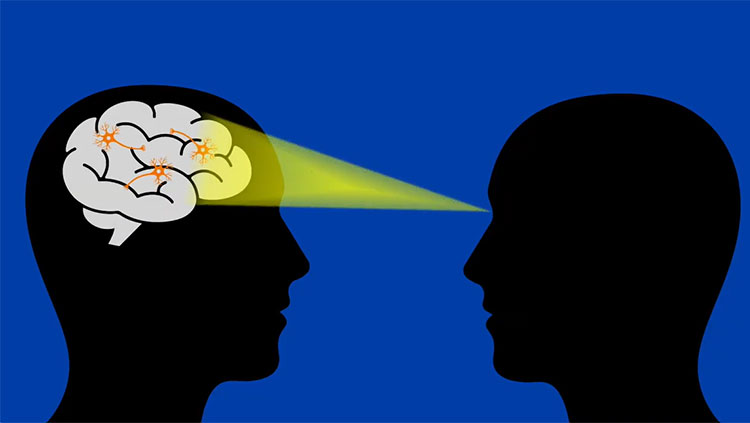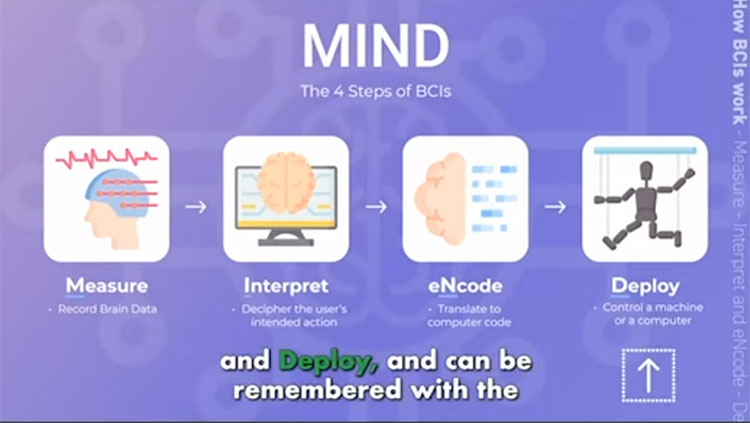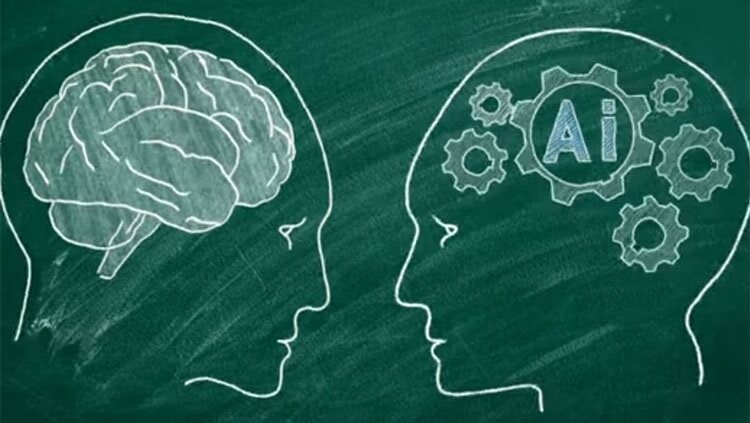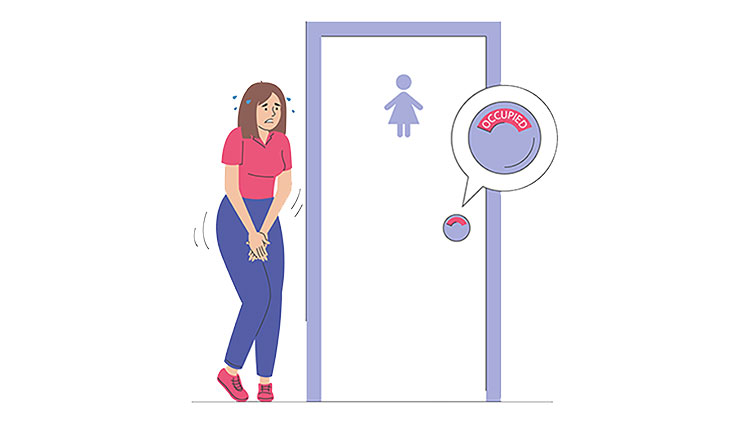Reading on Paper Versus Screens: What’s the Difference?
- Published28 Jul 2020
- Author Kerry Benson
- Source BrainFacts/SfN

During the coronavirus pandemic, students worldwide shifted from the classroom to remote, online learning. Many swapped hard copy textbooks and worksheets for websites and other digital resources. Digital books have been with us for a decade — but how well are we absorbing it all?
Turns out print is easier to comprehend than digital text.
“[Print reading] is kind of like meditation — focusing our attention on something still,” says Anne Mangen, a literacy professor at the University of Stavanger in Norway. “And it’s a whole different kind of immersion than responding to [digital] stimuli. I think it’s healthy for us as human beings to sit down with something that doesn’t move, ping, or call on our attention.”
Print is visually less demanding than digital text. It provides spatial and tactile cues to help readers process words on a page. Mindset may also be a factor. If people associate screen time with casual web-surfing they may rush through without fully absorbing the text.
Do you think you’re the exception? Most people do. Studies found digital reading breeds overconfidence.
“We read digital [text] more quickly, [so] we think we must understand it better,” explains Lauren Singer Trakhman, who studies reading comprehension at the University of Maryland, College Park. “It’s one of the best parts of our digital world — everything is at our fingertips and we can get the headlines in a second — but it may also be one of the pitfalls. Everything’s so quick and accessible that we may not be truly digesting [what we read] anymore.”
Both scientists agree digital is fine to scan news headings for main ideas, but longer, complicated texts are best read in print, especially to retain the details.
TL;DR: Digital Reading Equals Shallower Processing
In 2016, Singer Trakhman examined undergraduates’ reading comprehension after they read digital and print versions of articles. Format didn’t affect their grasp of the main idea, but students missed details when reading on screens.
Digital reading impairs comprehension, particularly for longer, more complex texts, says Mangen. This may be because of the shallowing hypothesis — constant exposure to fast-paced, digital media trains the brain to process information more rapidly and less thoroughly.
“There’s not much [neuroscientific research] on the reading of actual texts,” Mangen says. However, existing research does offer some clues. In a 2009 study, the marketing research company Millward Brown found the brain processes physical and digital materials differently. Participants viewed advertisements on a screen and on a printed card while undergoing an fMRI scan. Print materials were more likely to activate the medial prefrontal cortex and cingulate cortex, both involved in processing emotions. Reading print also generated more activity in the parietal cortex, which processes visual and spatial cues.
Keep Scrolling or Turn the Page?
Scrolling through digital text may impair comprehension by creating spatial challenges. A 2017 study found participants’ reading comprehension suffered when they scrolled through a comic book’s individual panels instead of seeing them all at once. When we read, our brains construct a cognitive map of the text, like recalling that a piece of information appeared near the top, left-hand page of a book. But imagine drawing a map of something with constantly moving landmarks, like a webpage. It’s harder to map words that aren’t in a fixed location, because we lose important “visual placeholders,” says Singer Trakhman.
Scrolling demands more from our working memory, she adds. “In our working memory, we can hold about seven items at a time, so the goal when reading is to take away as many demands as possible. When we have to remember what we just read and we don’t have spatial [cues] to help, that’s taking some of our bandwidth.”
In addition, the LED screens’ constant flickering glow creates more work for our eyes, causing visual and mental fatigue.
However, e-readers, like Kindles, don’t require scrolling and reduce eyestrain with e-ink technology. Those are likely superior to other digital-text formats, Mangen says. But they lack an important aspect of the reading experience: turning the page.
In one of Mangen’s studies, participants read a story either on a Kindle or in print and then underwent comprehension tests. The texts were identical, but Kindle readers pressed a button to progress through the book, while print readers turned pages. Print readers were more likely to accurately recall the story’s chronological order. Mangen says this may be because print provides sensorimotor cues that enhance cognitive processing. When holding a book, we receive reminders of how many pages we’ve read and how many remain. We can flip pages to reread text as needed. Some research suggests we process information more effectively when we recruit multiple senses, and multiple brain areas, during task learning — seeing the words, feeling the weight of the pages, and even smelling the paper.
What Happens Next?
Instead of getting better at digital reading, we may be getting worse. A study examining reading comprehension research between 2000 and 2017 indicates it’s harder to comprehend digital text. The researchers found print’s advantages are greater now than in 2000. In other words, this digital-reading problem isn’t going away.
“This [finding may] have to do with the shallowing hypothesis,” Mangen says. “The habits that we acquire when we read on screens are spilling over, and we’re trying to cope by reading faster and more superficially.”
Mangen and Singer Trakhman agree we shouldn’t ditch digital reading; instead we should consider the situation when choosing our reading medium.
“I’ll never say that everyone should be reading print all the time,” says Singer Trakhman. “People are always shocked to hear that I have a Kindle, and I love my Kindle. But I only use it when I’m reading for pleasure.”
To retain on-screen text information, Singer Trakham and Mangen suggest slowing down and handwriting main takeaways. (Typing works, but handwriting is likely a superior memory tool.)
When you need a break from the digital world, don’t underestimate the power of paper and ink. Consider turning off your electronic devices, getting a book, and curling up to turn the page.
CONTENTPROVIDEDBY
BrainFacts/SfN
DiscussionQuestions
1) What are the advantages of print reading over digital?
2) What areas of the brain respond when we read print text?
3) Why do researchers think it’s getting harder to comprehend digital text?
References
Delgado, P., Vargas, C., Ackerman, R., & Salmerón, L. (2018). Don’t throw away your printed books: A meta-analysis on the effects of reading media on reading comprehension. Educational Research Review, 25, 23–38. doi: 10.1016/j.edurev.2018.09.003
Garland, K. J., & Noyes, J. M. (2004). CRT monitors: Do they interfere with learning? Behaviour & Information Technology, 23(1), 43–52. doi: 10.1080/01449290310001638504
Hou, J., Rashid, J., & Lee, K. M. (2017). Cognitive map or medium materiality? Reading on paper and screen. Computers in Human Behavior, 67, 84–94. doi: 10.1016/j.chb.2016.10.014
Lauterman, T., & Ackerman, R. (2014). Overcoming screen inferiority in learning and calibration. Computers in Human Behavior, 35, 455–463. doi: 10.1016/j.chb.2014.02.046
Mangen, A., Olivier, G., & Velay, J.-L. (2019). Comparing Comprehension of a Long Text Read in Print Book and on Kindle: Where in the Text and When in the Story? Frontiers in Psychology, 10, 38. doi: 10.3389/fpsyg.2019.00038
Mangen, A., Walgermo, B. R., & Brønnick, K. (2013). Reading linear texts on paper versus computer screen: Effects on reading comprehension. International Journal of Educational Research, 58, 61–68. doi: 10.1016/j.ijer.2012.12.002
Mayer, K. M., Yildiz, I. B., Macedonia, M., & von Kriegstein, K. (2015). Visual and Motor Cortices Differentially Support the Translation of Foreign Language Words. Current Biology, 25(4), 530–535. doi: 10.1016/j.cub.2014.11.068
Millward Brown Case Study—Using Neuroscience to Understand. (2009). Retrieved from https://www.millwardbrown.com/docs/default-source/insight-documents/case-studies/MillwardBrown_CaseStudy_Neuroscience.pdf
Singer Trakhman, L., & Alexander, P. (2016). Reading Across Mediums: Effects of Reading Digital and Print Texts on Comprehension and Calibration. The Journal of Experimental Education. doi: 10.1080/00220973.2016.1143794
Smoker, T. J., Murphy, C. E., & Rockwell, A. K. (2009). Comparing Memory for Handwriting versus Typing. Proceedings of the Human Factors and Ergonomics Society Annual Meeting, 53(22), 1744–1747. doi: 10.1177/154193120905302218
Yan, Z., Hu, L., Chen, H., & Lu, F. (2008). Computer Vision Syndrome: A widely spreading but largely unknown epidemic among computer users. Including the Special Issue: Internet Empowerment, 24(5), 2026–2042. doi: 10.1016/j.chb.2007.09.004

















